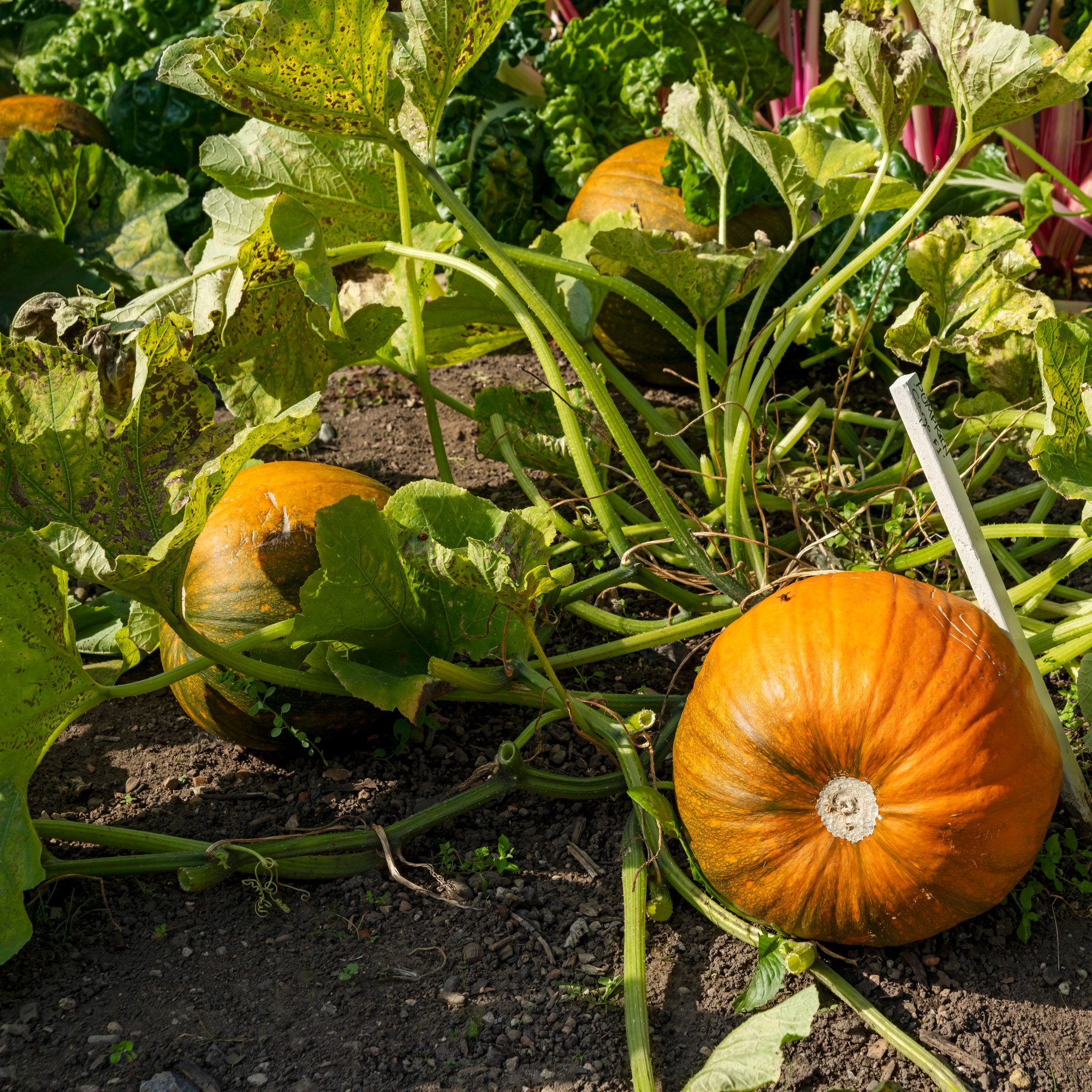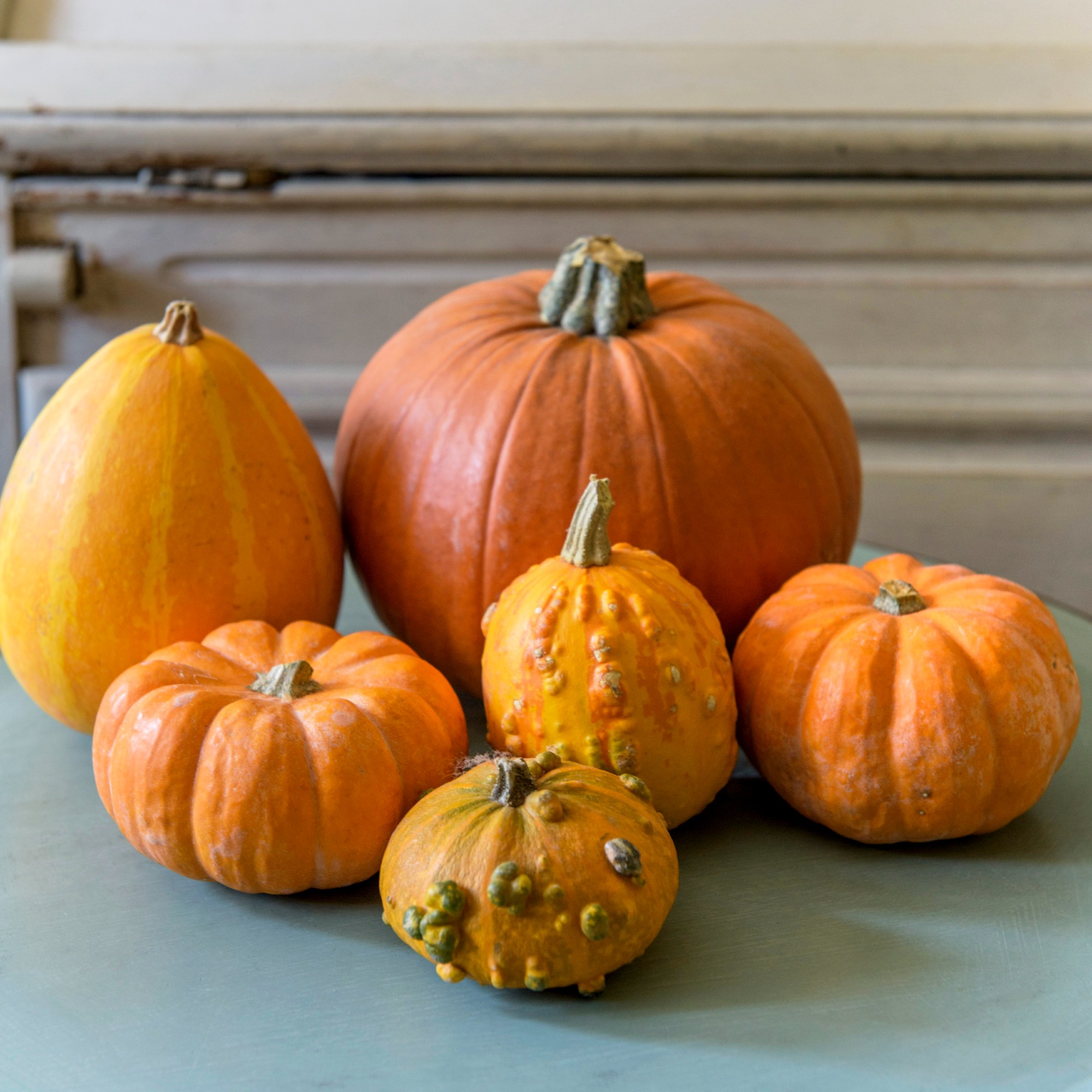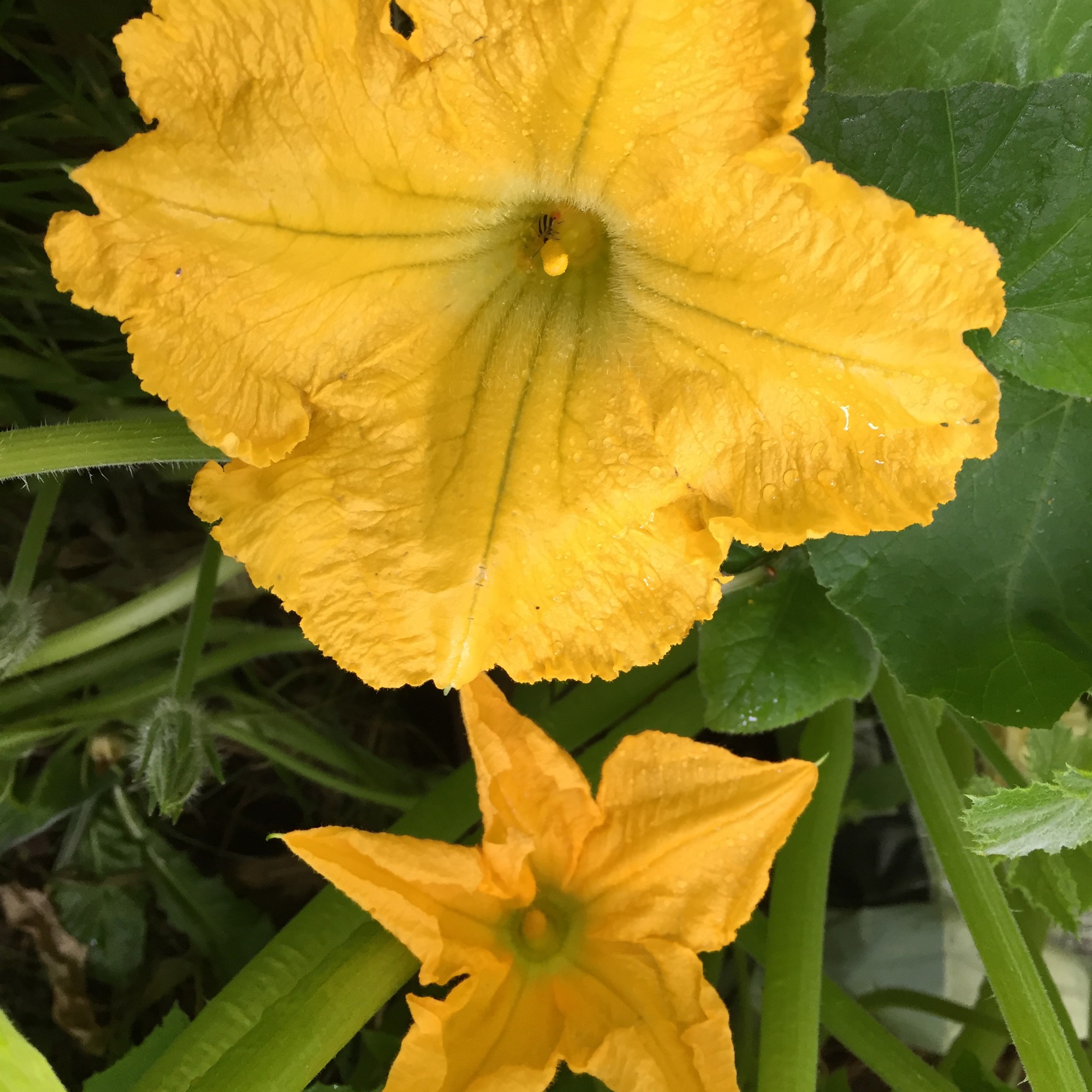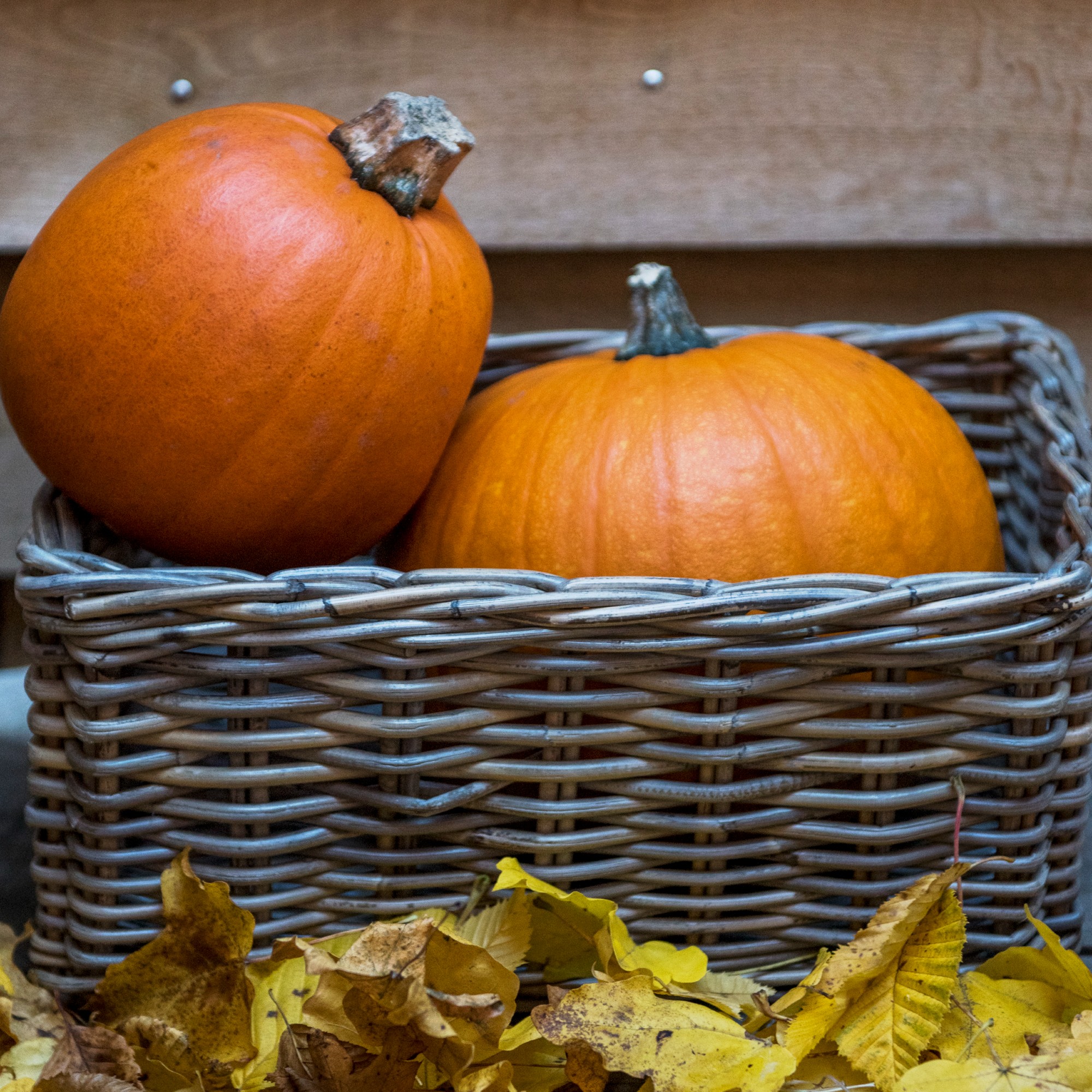
If this year you've decided to swap your store pumpkin for a home grown one we commend you as growing your own pumpkins is quite the undertaking. But if this is your first time growing on you might run into problems like rotting fruit or growth issues that could derail your Halloween pumpking ideas. If the latter is your trouble and you’re wrecking your brain ‘why is my pumpkin not growing’, then you’ve come to the right place.
We've asked gardening experts to identify some of the most common pumpkin growing issues and the mistakes you might be making which are preventing your pumpkin from growing. Some are so simple you might not even realise they're a mistake.
Why is my pumpkin not growing?

Knowing how to grow your own vegetables and other produce is so rewarding. But if you find yourself in the unfortunate position when your pumpkin is not growing, there are several reasons why your plant (and fruit) might not be doing so well. The most common tend to concern their water consumption and sun exposure.
‘Adequate sunlight is crucial for healthy growth, robust fruit development, and proper photosynthesis,’ explains gardening expert at Fantastic Gardeners, Petar Ivanov. ‘Pumpkins also have relatively high water needs, especially during their active growth and fruit development stages.’
Tackling these two, along with space and pollination, might just save your pumpkin plant and give you healthy and plump fruit the time when to harvest pumpkins comes.
1. Lack of sun

‘One of the main reasons your pumpkins may not be flourishing is the level of sunlight they are getting,’ says Jack Sutcliffe, co-founder of Power Sheds. ‘Pumpkins will thrive in fertile soil located in a warm and sunny section as they need a long, hot growing season to ensure they grow to maturity in time for winter. Ensure the location of your pumpkin has approximately four hours of sunlight throughout the day.’
Of course, that is easier said than done when it comes to the UK weather and the amount of sun we’re graced with. So if you’re faced with a lack of sunlight, Petar offers some pro tips.
‘If your growing season has limited sunlight, you can still take several steps to maximise pumpkin growth. First, choose sun-friendly locations when planting your pumpkins in your garden. This might include areas that receive the most sunlight throughout the day. If you have the flexibility, consider using reflective materials or strategically positioning reflective surfaces to bounce sunlight onto the pumpkin plants. Also use season extenders, such as row covers or cold frames to protect young plants and extend their growing time.’

He adds, ‘It's also recommended to start indoors to give your pumpkins a head start for a few weeks before the last expected frost date. This can help to ensure that your plants have a stronger start once they're transplanted outdoors. If you're growing pumpkins in containers or in areas with extremely limited sunlight, you might explore using supplemental artificial lighting, such as grow lights, to provide the necessary light spectrum for plant growth.’
2. Getting the right amount of water

Just like with any plant, knowing how much water your pumpkin needs is crucial in caring for it. Whether it is potted and you water it yourself or it’s growing in the garden and relies largely on rainwater.
Steve Chilton, garden expert at LeisureBench, recommends ‘checking how much moisture the pumpkin plant is receiving. Pumpkins need quite a bit of moisture in order to stay healthy, so make sure that this is the case, however don't over-do it as too much water can cause problems too.’

‘In regular conditions, it is recommended for pumpkins to have one inch of water per week, however, they will need more in drought conditions. To recover the plant, apply water for longer periods of time, fewer days of the week. This will encourage the roots to dig deeper into the soil, to retrieve water,’ Jack adds.
You can underwater your pumpkin but also overwater it. Especially if there is an excessive amount of rain. In which case, Steve advises to ‘make sure that your soil is draining efficiently and feel free to cover your pumpkins if they get too wet.’
How it’s being watered is also important according to Steve. ‘Water at the base of the plant instead of over the plant. Wetting the foliage of the plant can cause a dusty mildew to form which can lead to wilting and more.’
3. Give your pumpkin enough space to grow

These robust plants need enough breathing space to grow. So if you’re crowding them, then they might not be particularly happy and that might be why they are not thriving.
‘Ensure that your pumpkins have enough space and aren't crowded. They should be grown around 6 feet apart,’ Steve says.
4. Pollination issues
Lastly, your plant might be experiencing issues with pollination which is key to healthy pumpkin fruit growth.
But Petar from Fantastic Gardeners has a pro trick to offer. ‘If you notice a poor fruit set, you can try hand-pollinating the flowers. Gently transfer pollen from male to female flowers using a small brush or cotton swab.’
We hope that these tips will make taking care of your pumpkin plant a little less daunting and you will have gorgeous and healthy pumpkins to pick once fall comes around.
!["[T]he First and Fifth Amendments Require ICE to Provide Information About the Whereabouts of a Detained Person"](https://images.inkl.com/s3/publisher/cover/212/reason-cover.png?w=600)






